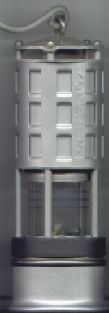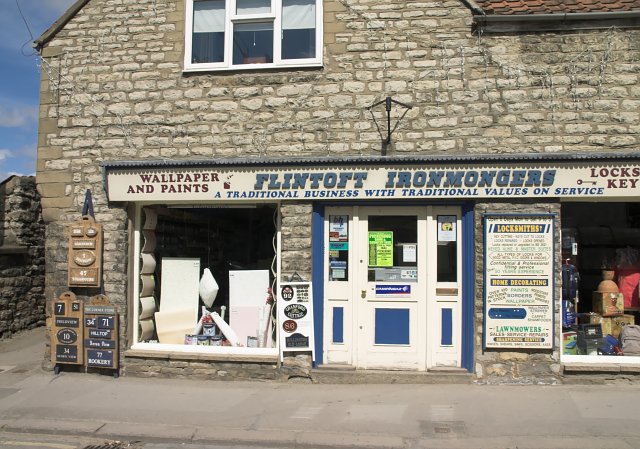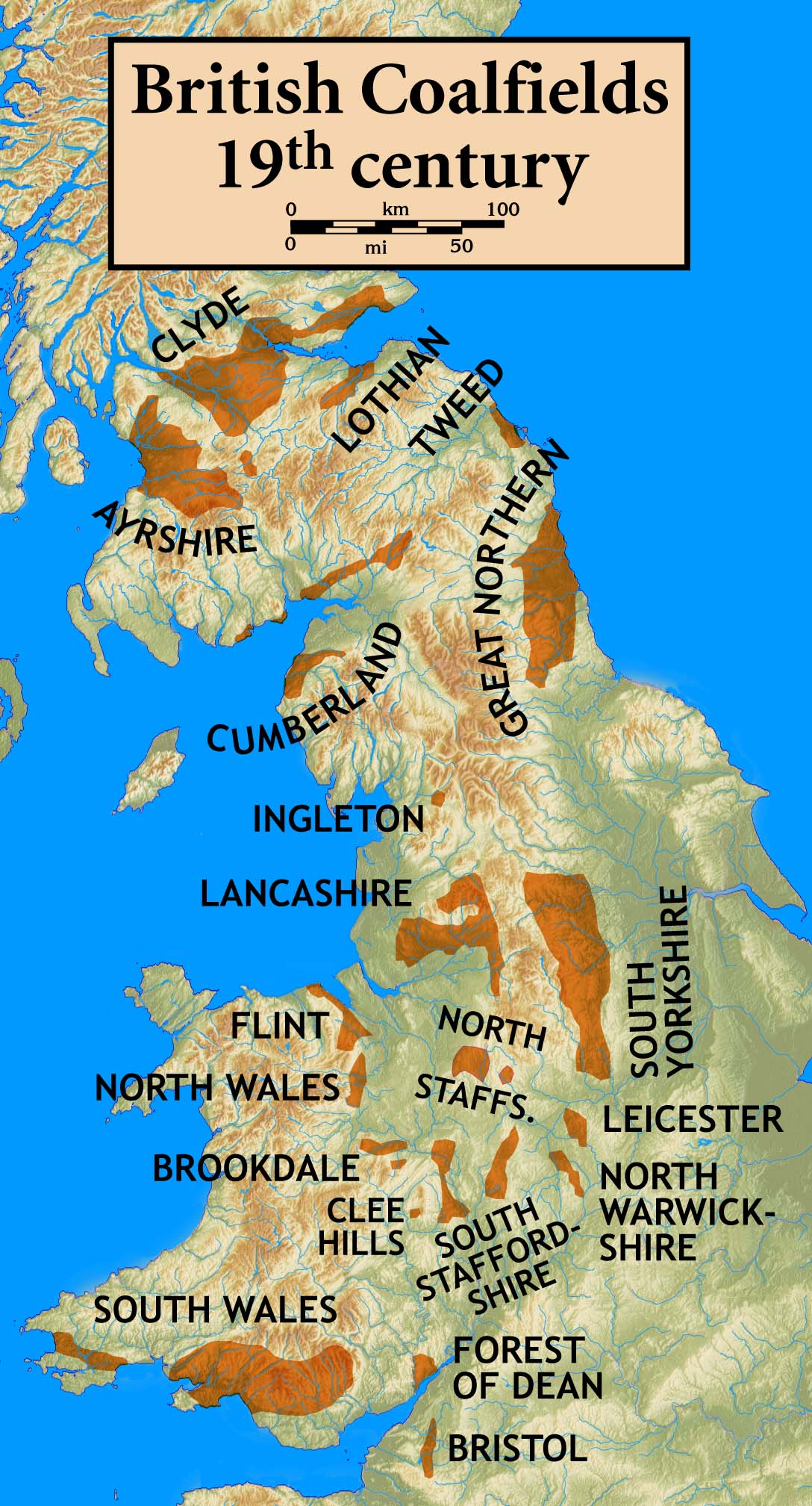|
Evan Thomas (inventor)
Evan Thomas (died after 1881) was a Welsh ironmonger who became an inventor and manufacturer of safety lamps for miners. He was the original proprietor of the Cambrian Lamp Works, established in Aberdare in 1860. In 1867, Thomas patented an improvement to the design of the safety lamp that would prevent the glass in the lamp from becoming loose by using india rubber. In 1868, he obtained a patent for "an improvement in the construction of miners' safety lamps, in such a manner as to enable petroleum or other mineral oils to be consumed therein". Thomas's best-selling lamp, the "no. 7", improved on a lamp invented in 1816 by William Reid Clanny, and was successful in passing tests set in 1886 by the Royal Commission on Accidents in Mines; it was selected as one of the four recommended types of lamp. In 1879, Evan Thomas was reported to have gone into partnership with John Davies in the ironmongery he ran in Ferndale. This partnership was separate to the lamp business, and Thomas ex ... [...More Info...] [...Related Items...] OR: [Wikipedia] [Google] [Baidu] |
Safety Lamp
A safety lamp is any of several types of lamp that provides illumination in coal mines and is designed to operate in air that may contain coal dust or gases, both of which are potentially flammable or explosive. Until the development of effective electric lamps in the early 1900s, miners used flame lamps to provide illumination. Open flame lamps could ignite flammable gases which collected in mines, causing explosions; safety lamps were developed to enclose the flame and prevent it from igniting the surrounding atmosphere. Flame safety lamps have been replaced in mining with sealed explosion-proof electric lights. Background Damps or gases Miners have traditionally referred to the various gases encountered during mining as damps, from the Middle Low German word ''dampf'' (meaning " vapour"). Damps are variable mixtures and are historic terms. * ''Firedamp'' Naturally occurring flammable mixtures, principally methane. * '' Blackdamp'' or ''Chokedamp'' Nitrogen and carbon diox ... [...More Info...] [...Related Items...] OR: [Wikipedia] [Google] [Baidu] |
India Rubber
Rubber, also called India rubber, latex, Amazonian rubber, ''caucho'', or ''caoutchouc'', as initially produced, consists of polymers of the organic compound isoprene, with minor impurities of other organic compounds. Thailand, Malaysia, and Indonesia are three of the leading rubber producers. Types of polyisoprene that are used as natural rubbers are classified as elastomers. Currently, rubber is harvested mainly in the form of the latex from the rubber tree (''Hevea brasiliensis'') or others. The latex is a sticky, milky and white colloid drawn off by making incisions in the bark and collecting the fluid in vessels in a process called "tapping". The latex then is refined into the rubber that is ready for commercial processing. In major areas, latex is allowed to coagulate in the collection cup. The coagulated lumps are collected and processed into dry forms for sale. Natural rubber is used extensively in many applications and products, either alone or in combination with ... [...More Info...] [...Related Items...] OR: [Wikipedia] [Google] [Baidu] |
William Reid Clanny
William Reid Clanny FRSE (1776 – 10 January 1850) was an Irish physician and inventor of a safety lamp. Life Clanny was born in Bangor, County Down, Kingdom of Ireland. He trained as a physician at Edinburgh, and served as an assistant surgeon in the Royal Navy. He was present at the Battle of Copenhagen in 1801. He left the Navy and graduated in 1803 before settling for a while in Durham. He moved to Bishopwearmouth, near Sunderland, England and practised there for 45 years. While in Durham, on 4th February, 1806, he was initiated into Freemasonry at the Marquis of Granby Lodge. Then after moving to Sunderland, he joined The Sea Captain's Lodge, later to be renamed Palatine Lodge No 97. He was elected a Fellow of the Royal Society of Edinburgh in 1825, his proposers being Sir George Ballingall, Robert Kaye Greville, and Sir William Newbigging. Clanny died on 10 January 1850 and was buried at Galleys Gill Cemetery in Sunderland. The entry in the Dictionary of National Bi ... [...More Info...] [...Related Items...] OR: [Wikipedia] [Google] [Baidu] |
Ironmongery
Ironmongery originally referred, first, to the manufacture of iron goods and, second, to the place of sale of such items for domestic rather than industrial use. In both contexts, the term has expanded to include items made of steel, aluminium, brass, or other metals, as well as plastics. The term ironmonger as a supplier of consumer goods is still widely used in Great Britain, the US equivalent being " hardware store". Many architectural ironmongery items (for example, door handles, locks, hinges, etc.) are also manufactured for wholesale and commercial use in offices and other buildings. History Dealing in ironware has a long tradition, dating back to the first recorded use of the metal to fashion useful objects as long ago as 1200 BC, and studying the movement of such goods around the world, often over long distances, has provided valuable insight into early societies and trading patterns. By the Middle Ages, skilled metalworkers were highly prized for their ability to ... [...More Info...] [...Related Items...] OR: [Wikipedia] [Google] [Baidu] |
Ferndale, Rhondda Cynon Taf
Ferndale ( cy, Glynrhedynog) is a town and community located in the Rhondda Valley in the county borough of Rhondda Cynon Taf, Wales. Neighbouring villages are Blaenllechau, Maerdy and Tylorstown. Ferndale was industrialised in the mid-19th century. The first coal mine shaft was sunk in 1857 and was the first community to be intensively industrialised in the Rhondda Valley. History In Welsh, Ferndale is known as Glynrhedynog, the name of one of the old farms on which the town is built. In its infancy Glynrhedynog was also known as Trerhondda after the name of the first large chapel to be built in the town. The naming of settlements after chapels was widespread in Wales at the time, as is shown in village names such as Bethesda, Beulah and Horeb, but neither Glynrhedynog nor Trerhondda was destined to be used for long. ''Glynrhedynog'' is made from the words "glyn" meaning valley and "rhedynog" meaning ferny, and so coal from the Glynrhedynog pits was marketed as Ferndale coal, ... [...More Info...] [...Related Items...] OR: [Wikipedia] [Google] [Baidu] |
Aberdare
Aberdare ( ; cy, Aberdâr) is a town in the Cynon Valley area of Rhondda Cynon Taf, Wales, at the confluence of the Rivers Dare (Dâr) and Cynon. Aberdare has a population of 39,550 (mid-2017 estimate). Aberdare is south-west of Merthyr Tydfil, north-west of Cardiff and east-north-east of Swansea. During the 19th century it became a thriving industrial settlement, which was also notable for the vitality of its cultural life and as an important publishing centre. Etymology The name ''Aberdare'' means "mouth/confluence of the river dare", as the town is located where the Dare river ( cy, Afon Dâr) meets the Cynon ( cy, afon Cynon). While the town's Welsh spelling uses formal conventions, the English spelling of the name reflects the town's pronunciation in the local Gwenhwyseg dialect of South East Wales. ''Dâr'' is an archaic Welsh word for oaks (the plural of ''derwen''), and the valley was noted for its large and fine oaks as late as the nineteenth century. In ancie ... [...More Info...] [...Related Items...] OR: [Wikipedia] [Google] [Baidu] |
South Wales Coalfield
The South Wales Coalfield ( cy, Maes glo De Cymru) extends across Pembrokeshire, Carmarthenshire, Swansea, Neath Port Talbot, Bridgend, Rhondda Cynon Taf, Merthyr Tydfil, Caerphilly, Blaenau Gwent and Torfaen. It is rich in coal deposits, especially in the South Wales Valleys. Description It comprises a fully exposed synclinorium with a varying thickness of coal measures ( Upper Carboniferous/Pennsylvanian) with thick, workable seams in the lower parts and generally thinner and sparser seams in the upper parts, together with a development of sandstones ( Pennant Sandstone). These sandstones have been much used in building construction (including the characteristic terraces of former miners' houses) and give rise to bleak uplands rising 300–600 metres above sea level between the steep-sided valleys in which most deep mines were developed. The coal generally increases in grade or "rank" from east to west, with bituminous coals in the east, and anthracite in the west, m ... [...More Info...] [...Related Items...] OR: [Wikipedia] [Google] [Baidu] |
People From Aberdare
A person ( : people) is a being that has certain capacities or attributes such as reason, morality, consciousness or self-consciousness, and being a part of a culturally established form of social relations such as kinship, ownership of property, or legal responsibility. The defining features of personhood and, consequently, what makes a person count as a person, differ widely among cultures and contexts. In addition to the question of personhood, of what makes a being count as a person to begin with, there are further questions about personal identity and self: both about what makes any particular person that particular person instead of another, and about what makes a person at one time the same person as they were or will be at another time despite any intervening changes. The plural form " people" is often used to refer to an entire nation or ethnic group (as in "a people"), and this was the original meaning of the word; it subsequently acquired its use as a plural f ... [...More Info...] [...Related Items...] OR: [Wikipedia] [Google] [Baidu] |
19th-century Welsh Businesspeople
The 19th (nineteenth) century began on 1 January 1801 ( MDCCCI), and ended on 31 December 1900 ( MCM). The 19th century was the ninth century of the 2nd millennium. The 19th century was characterized by vast social upheaval. Slavery was abolished in much of Europe and the Americas. The First Industrial Revolution, though it began in the late 18th century, expanding beyond its British homeland for the first time during this century, particularly remaking the economies and societies of the Low Countries, the Rhineland, Northern Italy, and the Northeastern United States. A few decades later, the Second Industrial Revolution led to ever more massive urbanization and much higher levels of productivity, profit, and prosperity, a pattern that continued into the 20th century. The Islamic gunpowder empires fell into decline and European imperialism brought much of South Asia, Southeast Asia, and almost all of Africa under colonial rule. It was also marked by the collapse of the lar ... [...More Info...] [...Related Items...] OR: [Wikipedia] [Google] [Baidu] |






_1938.jpg)
